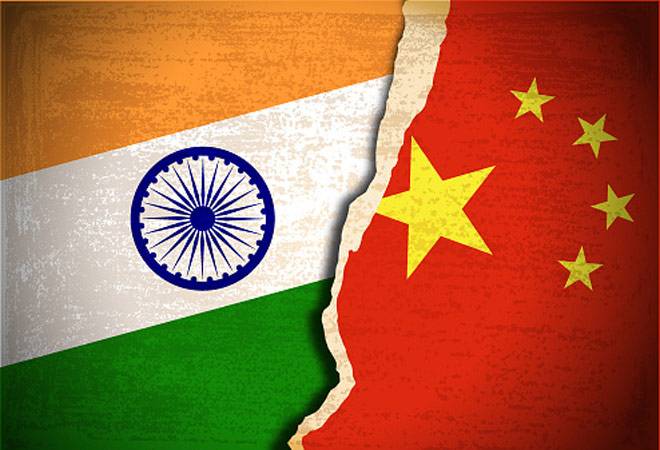This article is written by Souradh C. Valson, from Government Law College, Thiruvananthapuram. The present border conflicts, their causes, and their effects are discussed in this article.
Table of Contents
Introduction
The relation between India and China has not always been smooth. With the border issue at play, the differences between the two superpowers are worse than ever. Retaliatory measures by both countries resulted in collateral damage amidst the pandemic. In this article, I attempt to explain the Indo-China relation and its significance from a legal perspective.
Indo-China relations
Indo-China relations date back to the 2nd century BCE. Both countries encouraged the movement of culture and trade between them, facilitated by the silk route. Buddhism, the largest organized religion in China, was transmitted from India. Friendly relations prevailed between the two states until the British invaded India; many sepoys(Indian soldiers) in the British service participated in the First and Second Opium Wars (19th Century) against the imperial Qing China, and for suppressing the Boxer Rebellion (20th Century). The nature of the Indo-China relationship changed after the independence of India. Around the same time, on 1st October 1949, the People’s Liberation Army (PLA) took over power in China. The ideologies of these newly formed states differed. India believed in the Nehru-Gandhian philosophy of peaceful co-existence, whereas China followed Mao’s Chinese Marxist ideology. Mao criticized India for living in the shadows of the imperialistic framework left behind by the Britishers. At present, the relation between the two is not at its best phase. Border disputes and economic rivalry continue to hurt the amicable relations between the two states.
Issues between India and China
Here is a list of the issues between India and China:
Border Conflicts
The Sino-Indian dispute is for the sovereignty of territories between the borders of the two countries. India and China have the longest and the highest disputed border, and it is divided into 3 sectors: the Eastern, Central, and Western. In the Eastern sector, Arunachal Pradesh shares an 1129 km border with China.
The central sector is the shortest with a distance of only 89 km. It covers the Indian states of Uttarakhand and Himachal Pradesh. The western sector is along the Himalayan region of Ladakh. These three border regions have witnessed numerous border conflicts. The important border conflicts are:
-
The Sino-Indian War
Border dispute, disagreement with India’s forward policy, and granting asylum to the Dalai Lama fueled the war between the two forces in 1962. This four-week war left thousands of Indian soldiers dead. China continued to keep the Aksai Chin area, which was a corridor linking Tibet and western China. On November 20, 1962, China declared a ceasefire and withdrew to the Line of Actual Control, thereby stopping the war.
-
Nathua La and Chola clashes
With tensions still running high from the war, on September 11, 1967, a series of clashes took place between the forces along the borders of the Himalayan Kingdom of Sikkim. A strengthened Indian Army from the war was able to fend off the Chinese army. Reports from the Indian Defence Ministry states that around 80 Indian soldiers died, and the casualties counted up to 400 on the Chinese side. After the conflicts, China retreated, and Sikkim became an Indian state in 1975.
-
Tulung La ambush
On October 20, 1975, Chinese soldiers ambushed and killed 4 Assamese jawans during their patrol. Chinese forces crossed over into Indian territory and ambushed the soldier along the dividing line of Arunachal Pradesh. The Tulung La ambush was the last time when shots were officially fired along the disputed border.
-
Doklam standoff
In response to the Chinese construction of roads in Doklam, referred to as a “chicken neck” that connects India and the other northeastern states. This construction on the Sikkim-Bhutan-Tibet Trijunction resulted in a 73-day confrontation to prevent the further construction of the roads.
-
Ladakh confrontation
On June 15, 2020, due to the existing tension, in an aggressive melee fighting, 20 Indian soldiers and an official were killed. A series of low tension conflicts during early May led to this clash.
Water Disputes
Languchen Khabab, Tackok Khabab, Ma Cha Khabab, Senge Khabab are the four rivers that originate in Tibet and flow into India. These rivers are the major sources of water for many northeastern states. By the construction of dams, the water is diverted and affects the flow of water into India. After the Galwan clashes, China restricted the flow of the Galwan River, which originates in the Chinese-controlled area of Aksai Chin, to prevent water from reaching India.
Exile of the Dalai Lama and relation with Tibet
One of the major reasons for the Indo-China conflicts is the unresolved issue of Tibet. In 1950, China invaded Tibet to reclaim its sovereignty, which led the 14th Dalai Lama to flee Tibet. India helped the Dalai Lama and his followers to shelter in Dharamsala. China criticized India’s move to shelter a Chinese enemy. Although India has recognized Tibet as a part of China, PLA(People’s Liberation Army) officially stated it opposes any country which provides a platform for anti-China activities.
String of Pearls
China is extending its influence in the Indian Ocean by developing various ports in other countries encircling India. This new silk route, dubbed as the string of pearls, extends from Hainan Island (South China Sea) to Bagamoyo in Tanzania, Africa. However, China denies all claims about the use of these ports as a naval base for threatening its neighbors. India’s growth in trade and other developmental activities in Africa and Latin America is also a cause of conflicts.
Trade Imbalance and economic relations
China and India are the economic powerhouses in Asia, and any conflict can have far-reaching consequences on their intertwined economies. China, with the world’s second-largest GDP of about $14 trillion, is India’s biggest trading partner after the U.S. Taking a look at the bilateral economic ties shows how connected the nations are:
-
India China Trade
India has a trade deficit of $48 billion with China, which is a significant dip from $53 billion in 2018-19. 16% of India’s imports are from China and include smartphones, appliances, iron, and steel products, pharmaceutical ingredients, among other things, which witnessed a massive increase by 45 percent since the 2000s. China accounts for around 5% of Indian exports and is the third-largest market for Indian exports.
-
Chinese Investments
According to the Chinese commerce ministry, around $8 billion is injected as FDI into Indian industries like metallurgy, electrical equipment, renewable energy, automotive, and chemicals. Chinese mobile phone manufacturers like Oppo and Vivo have manufacturing facilities in India. Adani Global Ltd, Jindal Steel, and Power, and Aurobinda Pharmacies are some of the Indian companies in China.
-
China and Indian Startups
Chinese investors have put around $5 billion in Indian Startups. 18 of the 30 unicorns in India are funded by Chinese investors, most of these funds come through Singapore, Hong Kong, or other offices of these Chinese companies.
Here are a few famous Indian companies with Chinese investors:
- Tencent Holdings has around $50 million investment in BYJU’s.
- In Zomato, Alibaba group has an investment of over $150 million.
- OYO has around $100 million investments from the Didi Chuxing, China lodging group.
-
India’s smartphone market
Chinese smartphones dominate the Indian markets. Led by Xiaomi, Oppo, and Vivo, they together hold 75%, leaving global giants like Apple and Samsung behind. From 2016-19, there was a 195% increase in app downloads in India, more than half of these downloads, in both iOS and Android, were for Chinese-funded applications. Pubg, Tik Tok, and UC browser were some of the successful apps in the Indian markets.
-
Dependence on China for Drug ingredients
India has the third-largest pharmaceutical industry by volume. India exported around $14 billion worth of medicines to the U.S. However, India imports around 68% of its pharmaceutical ingredients or key ingredients from China.
-
Indo China tourism
More than 3.5 lakh Indians visit China annually. China was the eighth largest market for Indians.
Passage of China Pakistan Economic Corridor
Several under-construction infrastructure projects in Pakistan funded by China are termed the CPEC. It is a part of the revival of the silk route by China. This project also provides for the reconstruction of the Karakoram highway that passes through POK (Pakistan Occupied Kashmir), which is opposed by India. Apart from these issues, Railways and roads are rapidly constructed by China along the border. China is also constantly interfering in the internal affairs of India and the South China Sea dispute. China has abused its veto powers against India in NSG( Nuclear Suppliers Group) and other International decisions.
Bilateral agreements
Since the Sino-India war in 1962, both countries have entered into numerous agreements with each other.
- 1993 Agreement on the Maintenance of Peace and Tranquility along the Line of Actual Control in the Sino-Indian Border directed both countries to minimize troops and maintain friendly relations till the border is properly demarcated.
- 1996 Agreement between the Government of the Republic of India and the Government of the People’s Republic of China on Confidence-Building Measures in the Military Field along the Line of Actual Control in the Sino-Indian Border directed the countries to military disclosure during friendly exercise at the border. Restrictions are placed on certain types of ammunition.
- 2005 Protocol on the Modalities for the Implementation of Confidence-Building Measures in the Military Field along the Line of Actual Control in the Sino-Indian Border was passed. This was done to implement the existing agreements and to build confidence through a Bi-annual meeting to discuss border issues.
- The 2005 Agreement between the Government of the People’s Republic of China and the Government of the Republic of India on the Political Parameters and Guiding Principles for the Settlement of the China-India Boundary Question, entered intending to ensure the development of bilateral ties between the countries without the border issues
- 2012 Establishment of a Working Mechanism for Consultation and Coordination on China-India Border Affairs through this agreement, both the countries adopted the method of consultation and coordination for border issues.
- The 2013 Border Defense Cooperation Agreement between India and China was entered into to reduce miscommunications and improve communications on the border issue.
Critical analysis of the present situation
The 2020 Indo-China skirmishes have altered the relations between the two countries like never before. In response to the border attacks, India banned 59 Chinese apps or those with Chinese origins under Section 69A of the Information Technology Act, 2000. The Chinese tech giants, on the one hand, raise a very important question about the inconsistency of apps developed in other countries with privacy. Recently the Calcutta High Court held that foreign entities have locus standi to file a writ under Article 226. On the other hand, the users contend that their right to express themselves and use the internet is violated arbitrarily by the ban. Now, these questions come under the ambit of Article 14, which requires the state to treat every person equally. However, Article 14 allows the classification of persons and things if it is reasonable. The dissimilar treatment here refers to banning only Chinese apps and not apps from other countries for privacy concerns. Two international agreements made under the World Trade Organization (WTO) are General Agreement on Tariffs and Trade (GATT) or General Agreement on Trade in Services (GATS), which are also relevant in the present case.
In Measures Affecting Cross Border Supply of Gambling and Betting Services, the appellate authority held that foreign internet-based services have the right to demand access to a foreign market. Restrictions such as bans are permissible only if they are justified. If the bans are necessary for the state’s interests, then the GATS commitments are exempted. Even if GATT is considered as the governing framework, the landmark ruling between Russia and Ukraine where the Panel noted that: “political or economic differences between Members are not sufficient, of themselves, to constitute an emergency in international relations for purposes of subparagraph (iii) of Art XXI of GATT” although stare decisis has no applicability, the earlier decision will have a persuasive effect in dealing the matters between India and China.
Conclusion
The Indo-China relation is going through a rough patch at the moment, fueled by a border dispute and retaliatory ban on Chinese apps by India. If this continues, the economic stability and amicable relations of the two Asian powerhouses look bleak. Diplomatic talks and compensatory mechanisms by the cooperation of both nations are urgently required for peaceful coexistence with our neighbor.
References
- https://blogs.loc.gov/law/2020/07/past-bilateral-border-agreements-between-china-and-india-and-the-june-15th-clash/
- https://www.indiatvnews.com/news/india/india-china-border-faceoff-lac-ladakh-standoff-tulung-la-galwan-vally-clashes-doklam-sumdorong-chu-626863#:~:text=Tulung%20La%20%2D%201975&text=Officially%2C%20India%20claimed%20on%2020,death%20of%204%20Indian%20soldiers
- https://www.ssbcrack.com/2017/08/major-issues-between-india-and-china.html
- https://www.livemint.com/Politics/PsdTIEaclnM6EkEMUrMGDP/Seven-flashpoints-between-India-and-China.html
- https://www.bloombergquint.com/economy-finance/six-things-to-know-about-india-china-economic-relations
LawSikho has created a telegram group for exchanging legal knowledge, referrals and various opportunities. You can click on this link and join:












